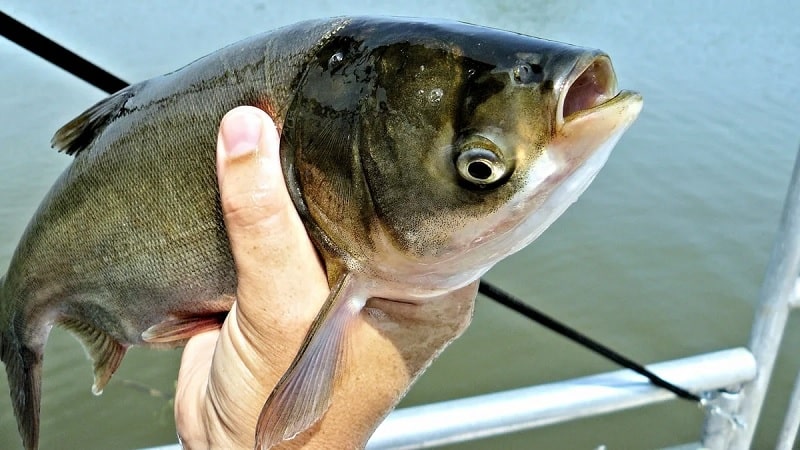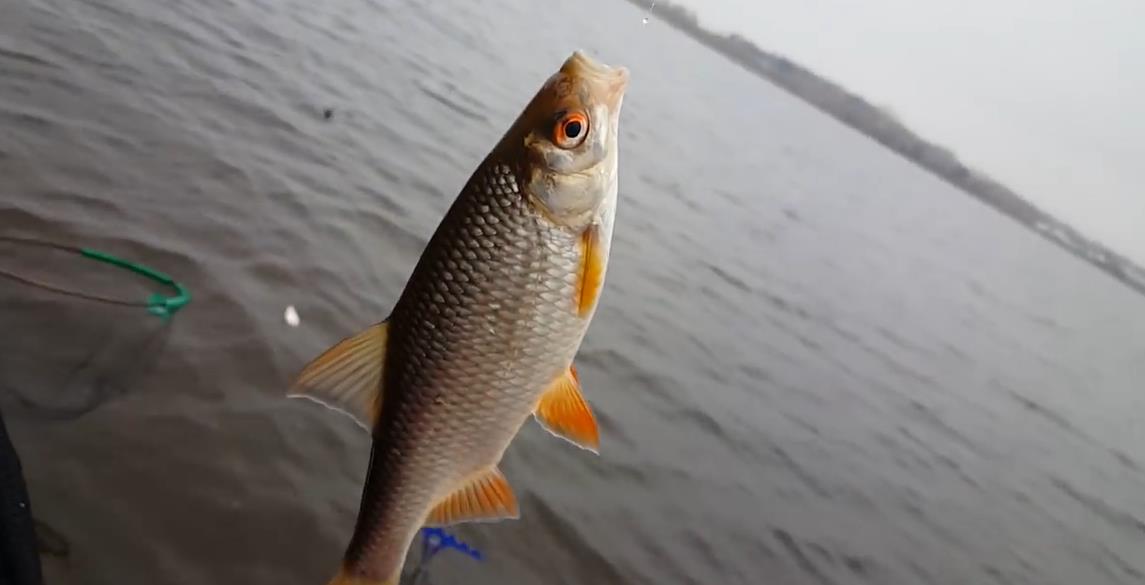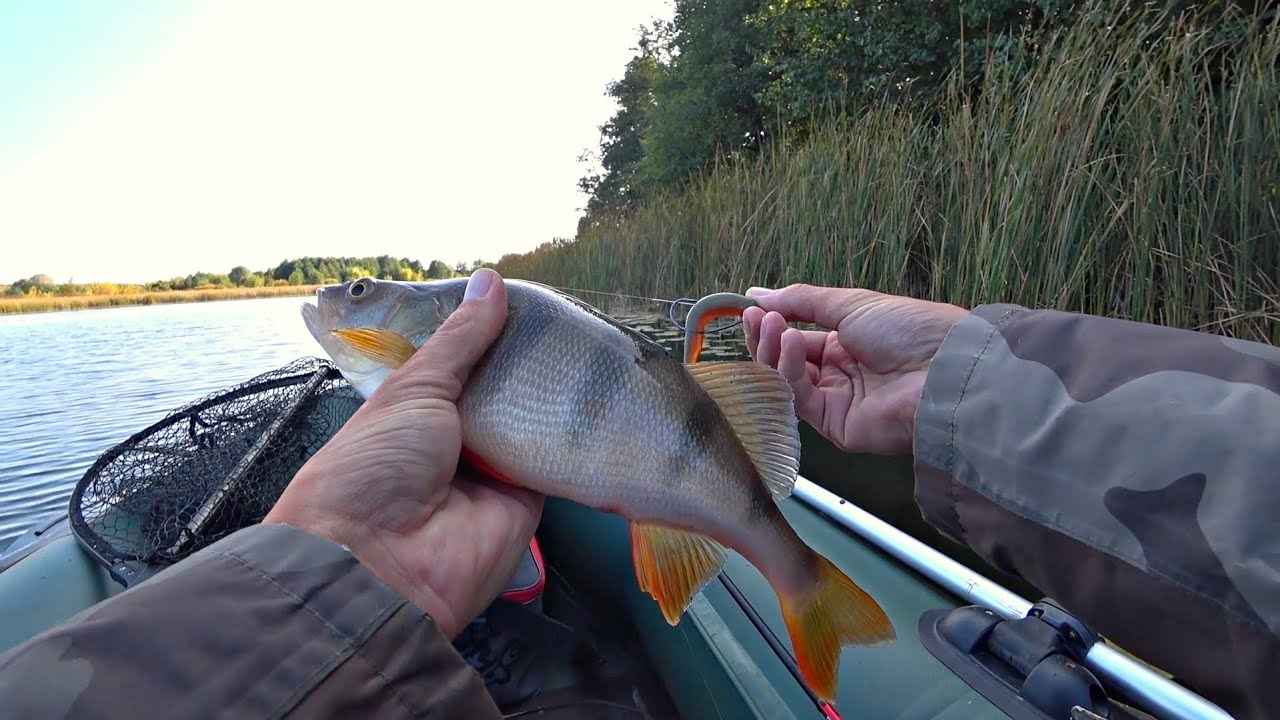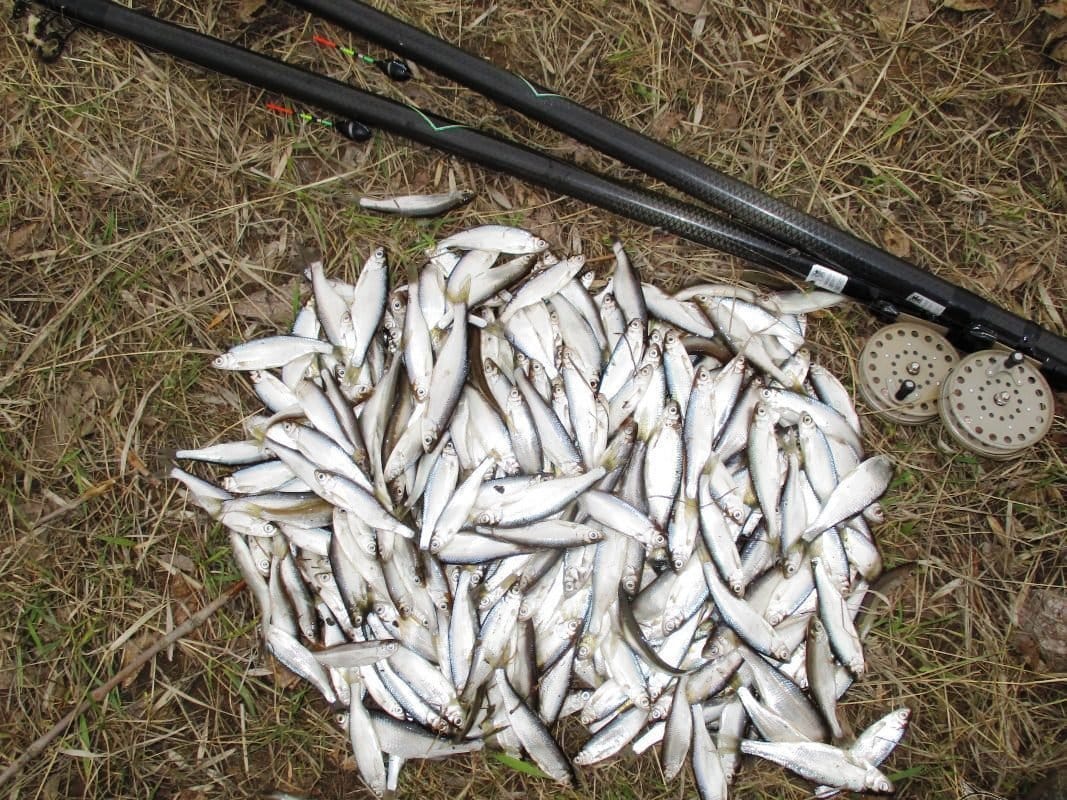Shemaya, or shamayka (from Persian shimadzhi – royal fish), is a ray-finned fish from the carp family, has excellent taste, is found in the Black, Azov, Caspian seas. It can reach quite impressive sizes, it is very good in dried and salted form. A
- What does a shemaya (shemaika) fish look like with a photo and description
- Varieties of royal fish
- The difference between shemai and similar fish – vimba and herring
- Habitat
- Lifestyle
- Spawning features
- Food
- Catching shemai – is it possible to catch a beauty from the Red Book?
- Where to find
- Tackle
- How to catch, if you still really want to see the shemaya live
- Lure
- Taste qualities
- Benefits and harms, calorie content
- How to cook fish
- Поделиться ссылкой:
What does a shemaya (shemaika) fish look like with a photo and description
Shamayka is distinguished by an elongated body shape, the fish is covered with silvery scales. She has a flat body, which is strongly compressed at the sides. There are silvery-blue tints on the head. The back is shiny and dark green. In this case, the sides are light in color and shine. The length of adults is 35 cm, and the weight reaches 650 grams. A distinctive feature of the fish is the shape of the dorsal fin. He leans back strongly. The front fins of the fish have a beautiful orange color. Shemai is characterized by silvery eyes and a large lower jaw.
Interesting fact! The Azov-Black Sea Shemaya was taken out of the Red Book.
https://youtu.be/nIYyyl5R4M0
Varieties of royal fish
Shemaya has 2 main types:
- Caspian shamayka – as the name implies, it lives in the Caspian Sea. On average, the fish weighs 200-250 grams. However, there are individuals whose weight reaches 600 grams. The Caspian Shemai is characterized by a low body and gray fins. The peritoneum is light in color and covered with dark pigmentation.
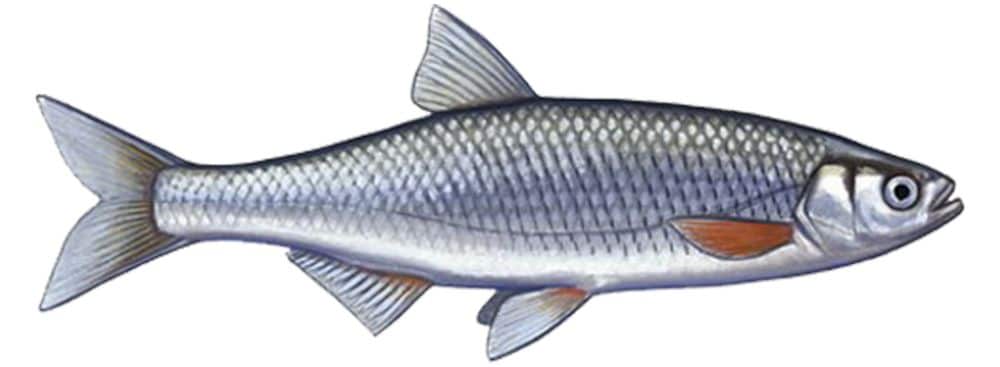
- Dnieper Azov-Black Sea Shemaya – this fish is considered one of the most valuable representatives of the Azov Sea basin. Its meat tastes great. It opens especially advantageously when dried.
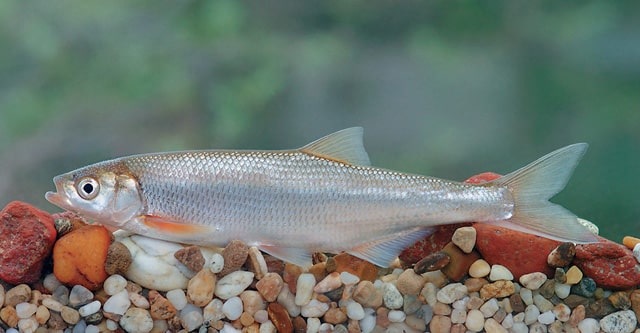
The difference between shemai and similar fish – vimba and herring
In appearance, shemaya resembles some representatives of the carp family. It looks like a roach, dace,
sabrefish . However, most of all shemayka resembles vimba However, there are some differences. So, vimba has a taller and flatter body. Some fishermen note the similarity of Shemai with Volga herring. But these fish are similar only superficially. It should be borne in mind that they belong to different families. The herring has a characteristic forehead, fins of a darker color. In more detail the differences seen in the photo: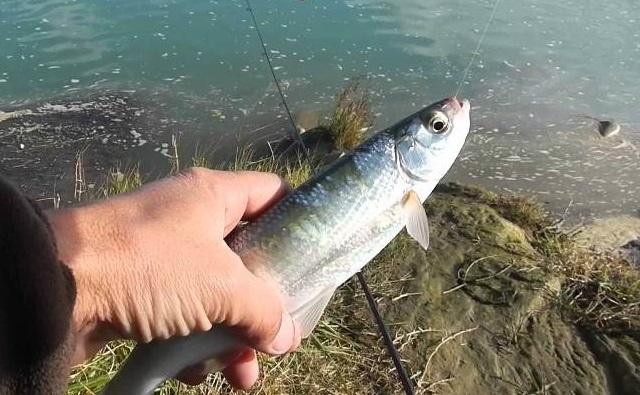
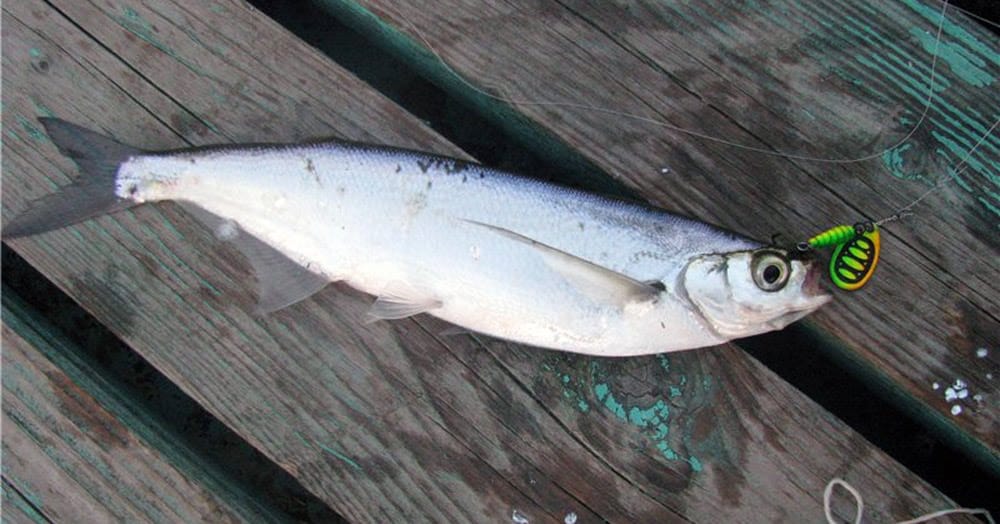

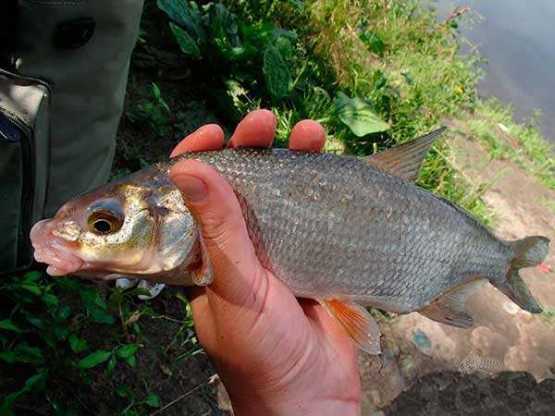
Habitat
Shamayka is found and lives in salt water. However, during the spawning season, it rises into the rivers that flow into the Caspian, Black or Azov seas. At the same time, there is also the rarest Aral subspecies of fish, which lays eggs near the shores. Between mating periods, this type of shemai moves to deep-water areas and almost never enters rivers. This fish can be found not only in natural conditions. Today there are many farms where shamayka is bred. However, wild ichthyofauna are considered more valuable because they contain healthy fat. That is why the Black Sea-Azov shemaya is most appreciated, which takes a long time to move to the breeding grounds.
Lifestyle
The peculiarities of the shamika’s behavior have been poorly studied. However, according to the observations of experts, it is considered a schooling fish that prefers to live in clean water containing a large amount of oxygen. With the onset of darkness, it moves to the upper layers of the reservoir. In the daytime, the fish go down to the depth.
Interesting to know! Schools of this fish predominantly live far from the coast. But sometimes they move close.
Spawning features
Shamayka can reproduce literally 2-3 times in life. Moreover, some individuals are able to spawn up to 5 times. Fish go to spawn in small groups, which contain more males than females. Immediately after the eggs are laid, the eggs move into the sea. Sexual maturity of females occurs by 3-4 years. At this time, a tubercle forms on their lower jaw. Males can reproduce as early as 2-3 years old. At the same time, their head is covered with thorns. For spawning, the spawn chooses shallow areas, the depth of which does not exceed 20-40 cm. There should be no silt or vegetation at the bottom. At the same time, it is important that it is rocky. Such areas should have clear water and a fairly strong current. The mating games of shamays occur at night. In this case, small eggs move under the current under the stones and stick to them.It takes about 5 days for the fry to develop. The hatched fry are characterized by slow growth. The yolk bladder dissolves in them only after 1 year. Moreover, the body weight does not exceed 1 gram. In this form, the fish move into the sea. It is there that they begin to actively absorb food and build up mass. The spawning period for different shemai species is seriously different. The longest mating season is typical for fish that live in the Kuban River. They start spawning in September and finish only in March. Don shamika spawns in early spring – immediately after the ice melts.The spawning period for different shemai species is seriously different. The longest mating season is typical for fish that live in the Kuban River. They start spawning in September and finish only in March. Don shamika spawns in early spring – immediately after the ice melts.The spawning period for different shemai species is seriously different. The longest mating season is typical for fish that live in the Kuban River. They start spawning in September and finish only in March. Donskaya shamika spawns in early spring – immediately after the ice melts.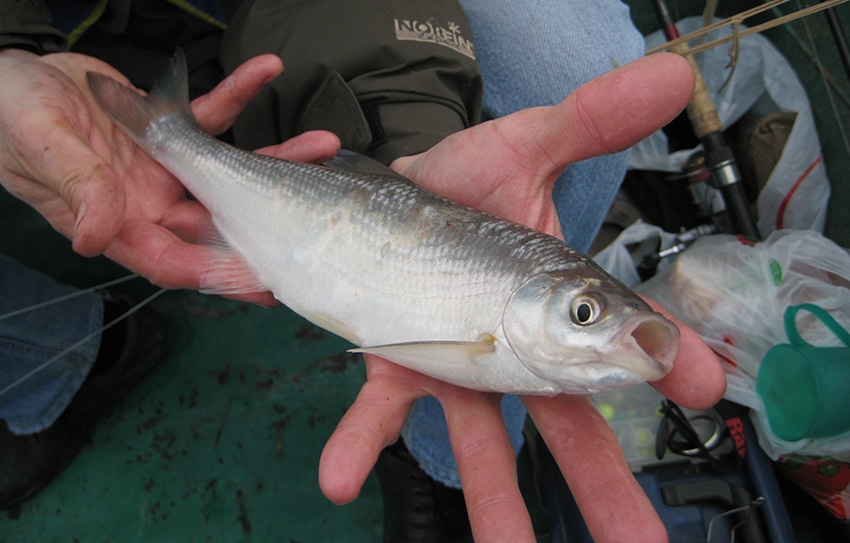
Food
The main food of these fish is the larvae of chironomid mosquitoes. They also feed on aquatic crustaceans that are in the middle layer of the reservoir. Schools of royal fish actively move around the water area in search of food and eat various aquatic inhabitants, including worms and young fish. Before spawning, shemaya feeds most actively in order to store more fat.
Catching shemai – is it possible to catch a beauty from the Red Book?
Shamayka is listed in the Red Book, as it is under the threat of extinction. Therefore, it is forbidden to catch it. However, locals often hunt this fish, despite heavy fines. Most fishing starts in mid to late April and ends in the second half of June.
Where to find
Most often, fishermen catch the Azov shemaya. In winter, a lot of fish can be caught in the Terek.
Tackle
For hunting for shemaya, you should use a float rod. In this case, it is recommended to use long and light rods, which are characterized by a rigid action. The cross-section of the line should be no more than 0.2 mm. When choosing hooks, you should give preference to the fifth number. The lead should be tapered and weigh 8-15 grams. It is recommended to use a noticeable float. He must keep the tackle upright.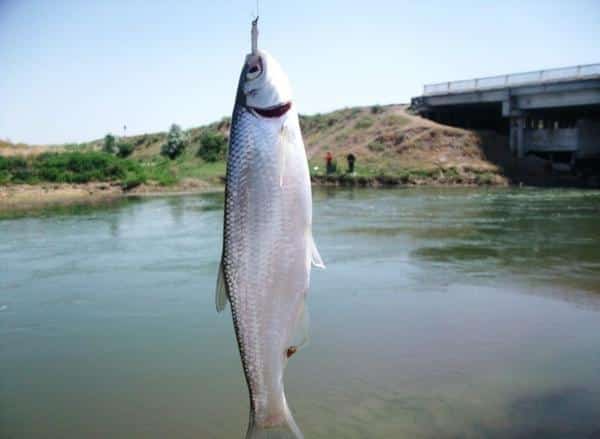
We strongly recommend not to purposefully catch the shemaya, but to gently release the accidentally caught one. Nature must be protected!
How to catch, if you still really want to see the shemaya live
Fry is considered the best bait for shemai. It can also be caught on chopped mussel meat. In addition, you can use shrimp and sea fleas. At the same time, the tactics of catching shamika has certain peculiarities. It is best to use a float rod for fishing. It should be borne in mind that only small fish live in the upper layers of reservoirs. The fish bite is sharp and energetic. In this case, the float does not completely sink into the water. To catch a fish, you need to do a quick sweep.
Important! Fresh fish spoils very quickly in summer. Therefore, immediately after catching the shemai, you need to release it, and in extreme cases, salt, dry or smoke.
Lure
For fishing to be successful, it is important to use groundbait. Chopped fish or shellfish meat is the best option. Real Shemayu Fishing: https://youtu.be/6K9BNIyvvX0
Taste qualities
Shemai is characterized by excellent taste. At the same time, the fish has the most exquisite taste during spawning. It has a medium fat content and a delicate texture. In this case, an abundance of small bones is considered a minus.
Benefits and harms, calorie content
100 grams of shamiki fillet contains only 88 kcal. That is why the fish can be safely attributed to dietary products. However, it includes many proteins that contain important amino acids. For athletes, fish helps to build muscle tissue, eating this fish helps burn a lot of calories and maintain normal metabolic processes, which helps to lose weight. Shemayu is recommended for pregnant and lactating women. It is also useful for people who face high physical exertion or stress. It is best to give fish cutlets to children, as it contains many small bones. The composition of shamika contains a lot of phosphorus, which helps to strengthen bone structures and teeth. In addition, this element has a beneficial effect on brain activity.Due to the high content of fluoride, it is possible to strengthen bones and avoid tooth decay. The composition also contains zinc, which takes part in the production of hormones. The deficiency of this substance in the body negatively affects the condition of the hair, nail plates and skin. In men, a lack of zinc causes a disruption in testosterone production, which ultimately provokes problems with potency. In addition, zinc improves immunity and makes people more resistant to stress. In men, a lack of zinc causes a disruption in testosterone production, which ultimately provokes problems with potency. In addition, zinc improves immunity and makes people more resistant to stress. In men, a lack of zinc causes a disruption in testosterone production, which ultimately provokes problems with potency. In addition, zinc improves immunity and makes people more resistant to stress.
How to cook fish
Shemaya has excellent taste. She belongs to the elite representatives of the carp family. Cured and smoked shamayka is considered especially valuable. At the same time, the fish that was caught during the spawning period has the best taste. The only drawback of fish “king” is the abundance of small bones in the meat. To get rid of them, you can marinate the fish in a weak vinegar solution. It is recommended to do this within 6-8 hours. Finding fresh or frozen fish for sale can be difficult. Most often it is sold dried or smoked. If you managed to buy a fresh product, it should be baked in foil or a sleeve. This will help you get the most juicy dish possible. How to salt shemaya – dried shamayka, video recipe: https://youtu.be/LnKHqEKBEj4 Shemaya is a tasty and healthy fish that belongs to the carp family.Today shamayka is under the threat of extinction, therefore it is rarely caught in natural conditions. Moreover, many farms are engaged in the cultivation of this fish.

